- Home
- slideshows
- miscellaneous
- These are 13 of the most popular social networks a decade ago that have died or faded into obscurity
These are 13 of the most popular social networks a decade ago that have died or faded into obscurity
Friendster

Club Penguin
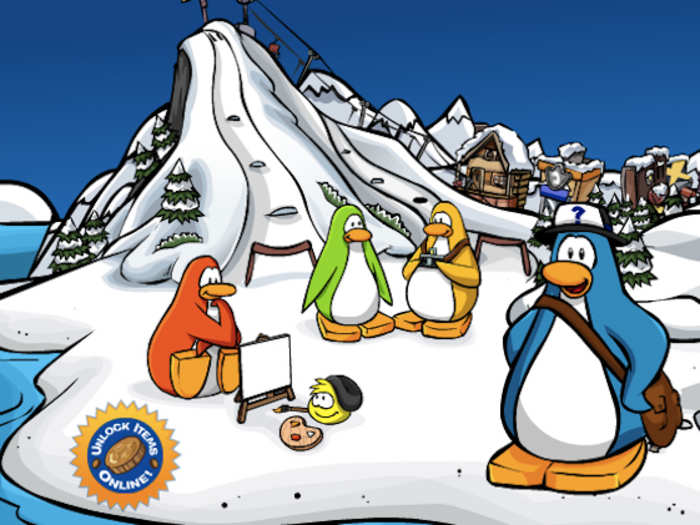
Club Penguin was a vital social network for teens and high school students, who could interact and chat with other users, under the guise of a computer game featuring animated penguins living in a virtual world. In a way, Club Penguin set an early baseline for a generation of adults who now interact through video games like Fortnite and Call of Duty with social networking features.
Disney bought Club Penguin for an estimated $700 million in 2007 at the height of the game's success. By 2013, Club Penguin had a reported 200 million users. The original desktop version of Club Penguin was shuttered in March 2017, and its successor — a mobile game called "Club Penguin Island" — shut down in September 2018, bringing an official end to the beloved franchise.
LiveJournal
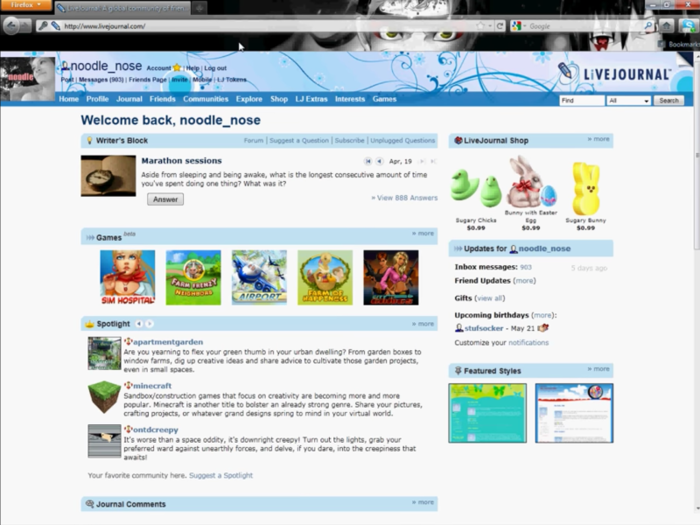
Before Tumblr, there was LiveJournal. Started in 1999, LiveJournal served as a popular blogging platform with over 10 million accounts at its peak. Even if you weren't an avid LiveJournal user, it was more likely you were familiar with the site's largest community, a celebrity gossip page called "Oh No They Didn't." ONTD was so popular that news of celebrity deaths, like Heath Ledger in 2008, would flood the site with so many users it would crash LiveJournal's servers.
LiveJournal's interest in the US started to slow by 2007, and the site's owner sold the platform to a Russian media company, called SUP, for $30 million. By 2009, all of LiveJournal's US operations were ceased and moved to Russia, making the platform — once a place for freedom from censorship — subject to Russian law and jurisdiction.
Although LiveJournal is still alive and accessible today in the US, the majority of the blogging platform's core audience is in Russia.
Digg
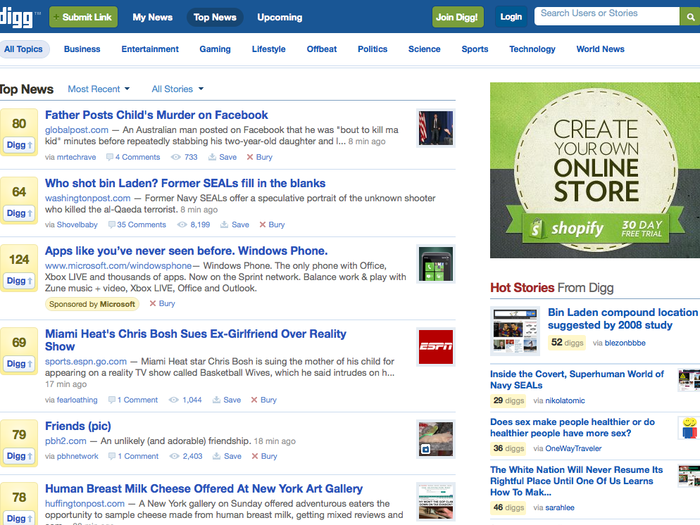
Digg launched itself as a news aggregator in 2005, but the truth was the platform was more like Reddit than anything else because of the platform's focus on community voting. Digg was one of the first to understand that users wanted the power to curate the web and decide what content gets attention or not on the website's front page.
Unfortunately, the launch of a new design for the platform in August 2010, known as the "New Digg," was a wildly unpopular one. It seems the remodel marked the beginning of the end for Digg: its number of users dropped off drastically, and both cofounders had stepped back from the company by the beginning of 2011.
Digg is still around today, but it doesn't resemble the platform it once was. When Digg was sold off in three parts in 2012, the logo and brand was sold off for a measly $500,000, and the site is now a more polished news aggregator.
Orkut
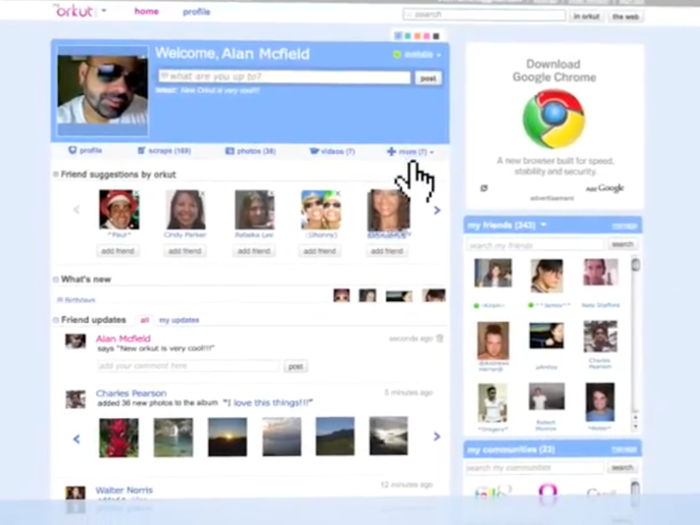
After failing to acquire Friendster in 2003, Google launched its own iteration of a social network in 2004, and named it Orkut after one of the company's software engineers.
While the site attracted little interest from users in the US, Orkut saw massive success in Brazil and India. Orkut was one of the most popular social networking sites in both Brazil and India into 2010, even as Facebook was gaining traction in the rest of the world. Orkut shuttered in 2014 after a 10-year run.
AIM (AOL Messenger)
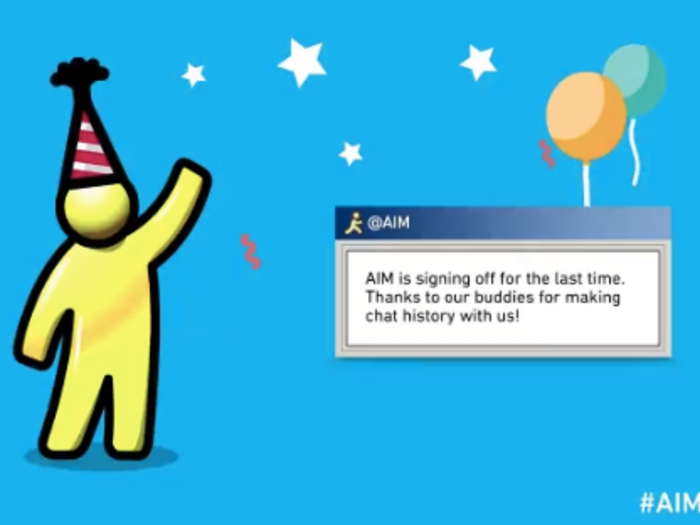
AIM was the first and most important social network for millenials, as well as for its impact on instant messaging afterwards. AOL's messaging service launched in 1997 and was quickly instilled in the daily lives of users, thanks to its iconic yellow running man and beloved features like away messages and users' "buddy lists."
AIM peaked in the early 2000s, and led the instant-messaging market with 53 million users in 2006. As other messenger services came onto the scene and text messaging became easier, AIM faded from everyday use. AIM shut down in 2017, bringing an end to our nostalgia-laden service.
Foursquare
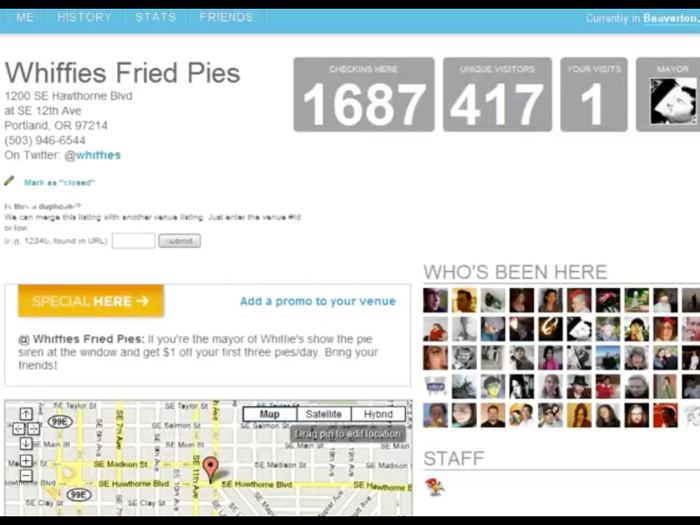
Fourquare only launched a year before 2010, but that's all the time it took for the app to become a breakout hit. Users loved the ability to check-in to places and help friends find each others' locations, all within a gamified system that encouraged competition and a fight for awards and mayorships.
By the end of 2010, Foursquare grew 3400% as a viral geolocation app. But its success was a flash in the pan, and its demise was predicted by 2013. However, the app is still alive today, with over 50 million users.
Tagged
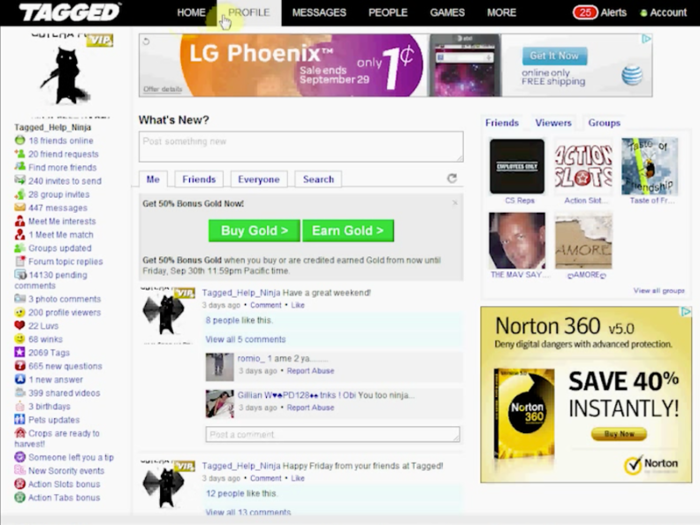
Tagged started as a social network for teens in 2004, but changed its mission when Facebook rose rapidly and became the trendy platform everyone wanted to be on. Tagged transitioned to being a place to meet new people, whether that was for (mainly) dating or friendships, by matching up their common interests.
By 2o10, Tagged had over 100 million users, and went on to acquire another major social network outside of the US, called Hi5. But with the explosion of dating apps like Tinder, Tagged faded in popularity, although it still exists today under dating-site conglomerate The Meet Group.
Bebo
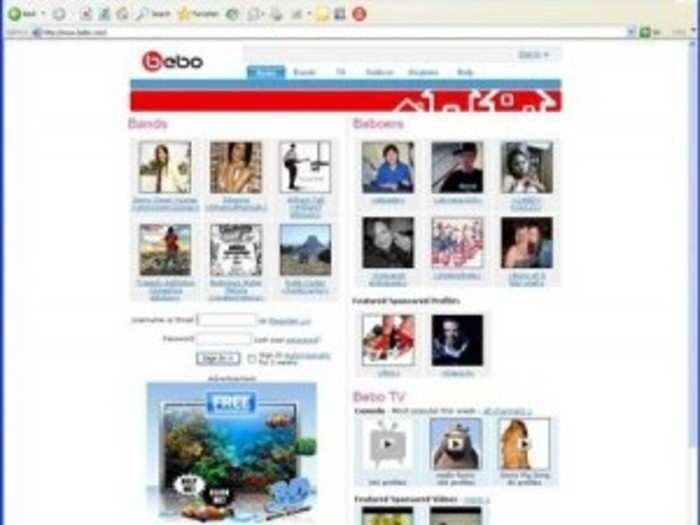
While it wasn't incredibly popular in the US, Bebo grew in popularity in countries like New Zealand, Australia, and the United Kingdom, where it was the most visited social network in 2007. Bebo was essentially like Facebook: you created a profile, and connected with old friends.
But as Bebo hits its stride in 2008 with 80 million unique users, AOL purchased the network for a hefty $850 million. The acquisition came just as Facebook took off, and Bebo struggled against its competitor. AOL hinted in 2010 that it might shut down the site, but it instead sold off Bebo at a major loss to investment firm Criterion Capital Partners.
Bebo has since continued to fade away: it filed for Chapter 11 bankruptcy in 2013, leading to Bebo's founders buying back the site for $1 million with a pledge to "reinvent" it. Bebo relaunched again in 2014 as a messaging app where users are represented by avatars, but later shifted to the esports business and was acquired in 2019 by streaming platform Twitch. The Bebo site itself was then taken offline.
StumbleUpon
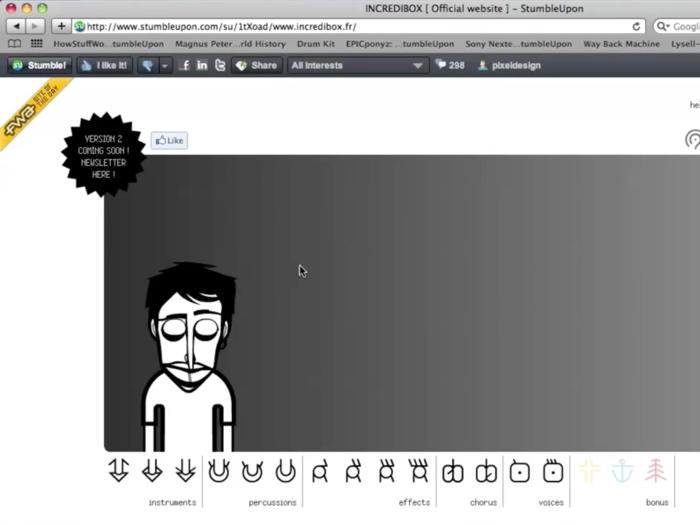
While StumbleUpon may have not gotten the same reputation of a social media service as Facebook or Twitter, it was an incredibly popular "serendipity engine" that made browsing the web a randomized and curated experience. StumbleUpon specialized in surfacing some of the strangest and clickable content on the web that you would never find on your own.
By November 2010, the web discovery platform had 12 million users, and continued to grow with success for a couple more years. However, an unpopular redesign wounded the company in 2012, and StumbleUpon laid off 30% of its staff the next year. To try to turn around the flailing company, StumbleUpon's cofounder and longtime CEO Garrett Camp (the same guy behind Uber) bought back a majority stake in the site to bring it to a "wider audience."
However, StumbleUpon's traffic continued to drop. Camp announced in 2018 that it was shutting down the site, and all existing accounts were moved over to a similar curation platform, also owned by Camp, called Mix.
Polyvore
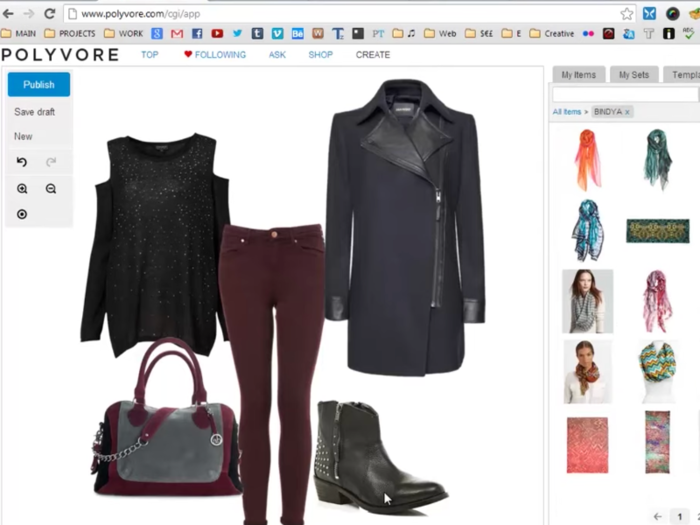
Polyvore centered its platform around fashion, allowing users to assemble collages of items — using images provided by stores, retailers, and clothing catalogs — that could be saved to virtual "closets" and used as style inspiration. Polyvore was attracting 6.6 million visitors a month by March 2010 by giving users the power to be "virtual Anna Wintours, and even had real-life influence on labels' businesses and style.
The Pinterest-like social platform's demise followed a string of ownership changes. Yahoo acquired Polyvore in 2015, and Verizon acquired Yahoo (and Polyvore with it) in 2017.
Verizon sold Polyvore's assets to Canadian online retailer Ssense in 2018, and the site was summarily shut down. The death of Polyvore, after 11 years, left its loyal fanbase surprised and upset.
Photobucket

Photo-hosting site Photobucket emerged in 2003 to compete alongside platforms like Snapfish and Flickr (which came a year later). By 2006, Photobucket accounted for 2% of US internet traffic, and the site claimed over 100 million members and 8 billion uploads in 2010. It also formed a surprising photo-sharing partnership with Twitter a year later.
However, Photobucket caught the ire of its millions of users, as well as websites using the photos it hosts, when it limited the features in its free version in 2017 and caused image links to break all over the internet. Users accused Photobucket of holding their photos for ransom behind a subscription fee. The site lowered its prices the following year, but user trust in the website had diminished. Photobucket is still around today.
MySpace
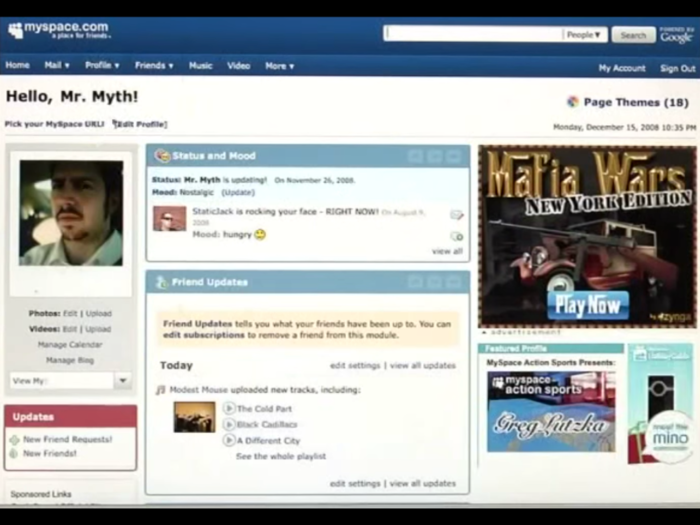
This one's kind of thrown in here for old times sake. Facebook's meteoric climb coincided with MySpace's rapid decline, and Facebook became the largest social networking platform in 2008. By 2010, MySpace was at its lowest point of membership and halved its monthly visitors in the timeframe of one year. Despite that, MySpace still had 57 million users by the end of 2010.
MySpace launched with great success in 2003 as a place for teens and young adults to build online personalities and chat with internet friends. But we can't forget about MySpace's music element, which helped to create a mix of music and social networking before Spotify was popular. MySpace helped to launch artists like My Chemical Romance and Lily Allen.
MySpace is, miraculously, still alive today.
Popular Right Now
Advertisement